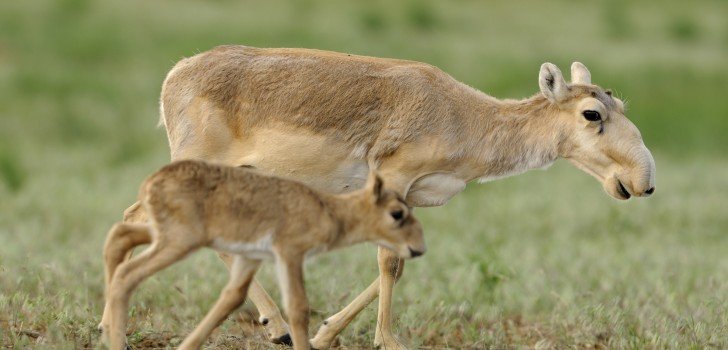In late May, geo-ecologist Steffen Zuther and his team travelled to Kazakhstan to observe and monitor a herd of saigas – antelopes that live on the grassy steppes of the land. The species is considered critically endangered as designated by the International Union for Conservation of Nature. Unfortunately, when Zuther and his team arrived, local veterinarians had reported that there were several dead antelopes. At first, scientists were not too alarmed since there had been recent “die-offs” of saigas in limited numbers.
This time however, the entire herd of 60,000 saiga died – within an amazingly short period of four days.
As researchers quickly tried to figure out the cause of the rapid die-offs, they determined that bacteria played a role in the deaths. But the identified bacteria are normally harmless, so why did they create such a problem? It remains a mystery.
Zuther stated that, “The extent of this die-off, and the speed it had, by spreading throughout the whole calving herd and killing all the animals, this has not been observed for any other species. It’s really unheard of.”
Saigas are quite important to the ecosystem found in the grassland steppes of Kazakhstan where the winters are so cold that they prevent plants from decomposing. The saigas graze on the plant matter and break it down so that the nutrients are recycled. A positive side effect of this process is that the chance of wildfires decreases because the saigas eat much of the loose leaf “litter” on the ground. The saigas also serve as prey for many predators in the region. Zuther pointed out that, “Where you find saiga, we recognize also that the other species are much more abundant.”
During the die-offs, the scientists took detailed samples of all elements of the environment in addition to conducting thorough necropsies of the animals. The fact that the females died first, followed by their calves, suggests that the mysterious killing “agent” was passed through the mothers’ milk.
An analysis of the tissue samples determined that certain bacteria normally found in saiga, caused significant bleeding in several of the organs of the animals.
These findings only deepen the mystery. Richard Kock, a wildlife veterinarian at Royal Veterinary College in the United Kingdom is simply baffled, stating that, “I have worked in veterinary diseases all my career and I have never seen 100% mortality. We had a herd of 60,000 aggregated and they all died. That is extraordinary.”
Stay Connected